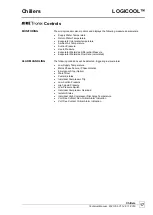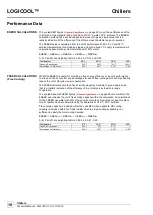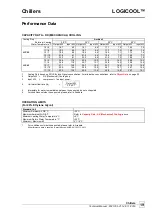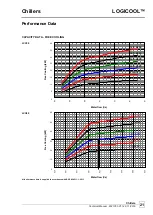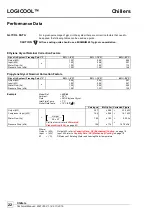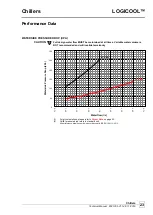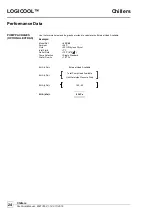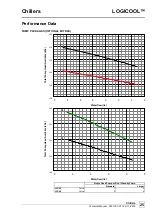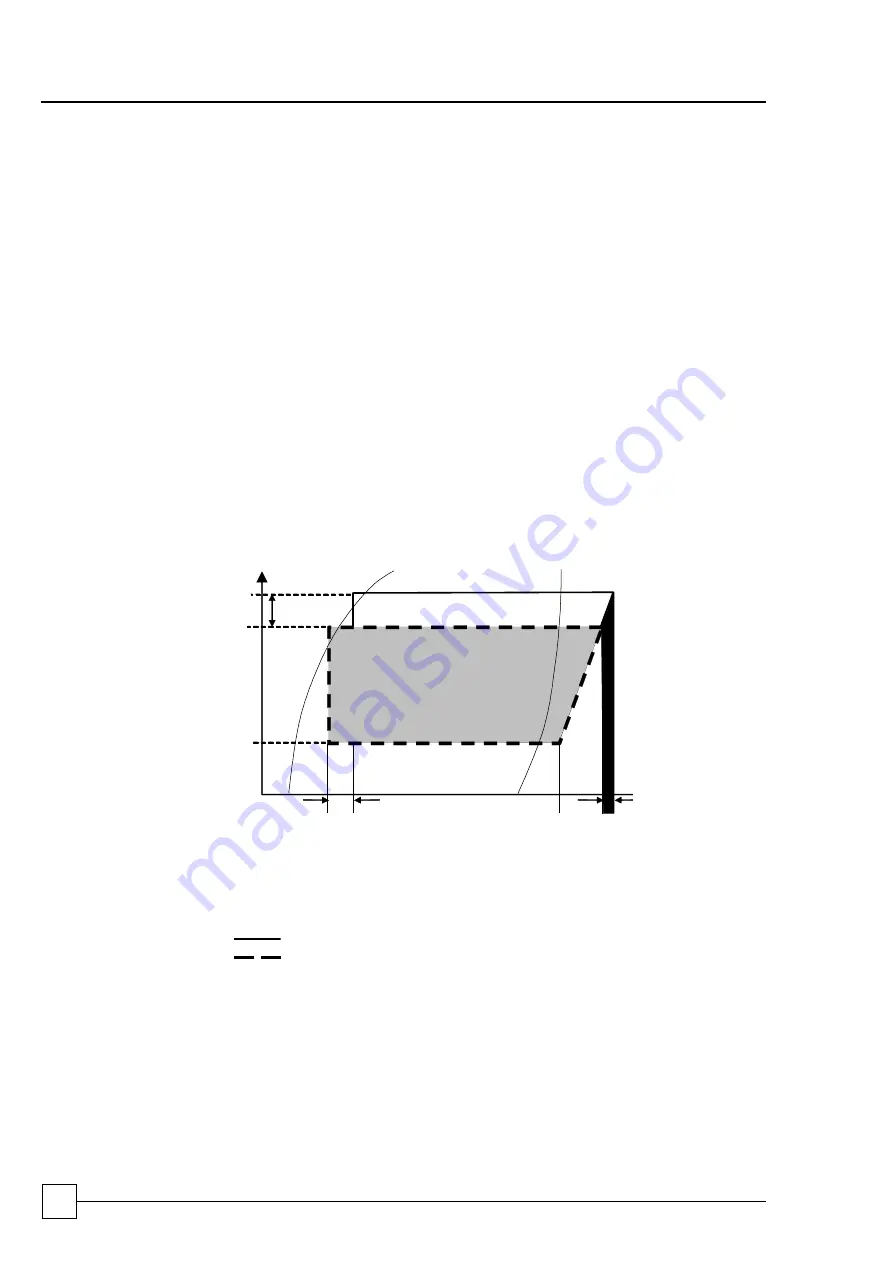
LOGICOOL™
Chillers
10
Chillers
Technical Manual : 6521355 V1.14.0 11/2016
Design Features & Information
ELECTRONIC EXPANSION VALVES (EEV)
Thermostatic Expansion
Valves (TEV)
Whilst offering versatile control at the full design duty of the unit, standard TEVs do not
automatically optimise themselves to all operating conditions. Therefore, if the
refrigeration system is operating at 40% or 50% of full load, especially at a lower ambient
temperature than that for which the valve was sized, the conventional TEV must have the
design head pressure available to ensure good refrigerant control. Maintaining an
artificially high condensing pressure is normal in conventional systems.
Electronic Expansion
Valves (EEV)
Using an EEV allows for good refrigeration control whilst operating at part load and lower
ambient conditions with a reduced condensing pressure. By fitting an EEV and adjusting
the head pressure control setting
an increase in the system EER (Energy Efficiency
Ratio) of up to 30% can typically be seen.
The Mollier diagram shown below helps to
illustrate how this increase in efficiency is achieved.
EEV’s differ to normal thermostatic expansion valves in their ability to maintain control of
refrigerant flow and the suction superheat at reduced head pressures. The turn-down rate
of a typical EEV is superior to that of its thermostatic equivalent, such that a reduced
optimum condensing pressure can be maintained at low compressor load. However low
the load is on the compressor, from zero to 100%, there will not be a problem with turn
down, even down to 10% of the valves rated capacity.
B
u
b
b
le
D
e
w
1
1
3
4
2
1
Compression
2
Condensation
3
Expansion
4
Evaporation
Reduced Condensing
Pressure
Pres
s
ure
(Ba
ra)
Evaporating Pressure
In
c
re
a
s
e
i
n
C
o
o
lin
g
D
u
ty
Enthalpy (kJ/kg)
R
e
d
u
c
tion
in
C
o
mpr
e
s
s
o
r
In
p
u
t
P
o
w
e
r
Key
Cooling Cycle @ 22°C ambient with a conventional TEV fitted.
Cooling cycle @ 22°C ambient, demonstrating a typical EEV condensing temperature
taking full advantage of lower ambient air temperatures (below 30°C).

















